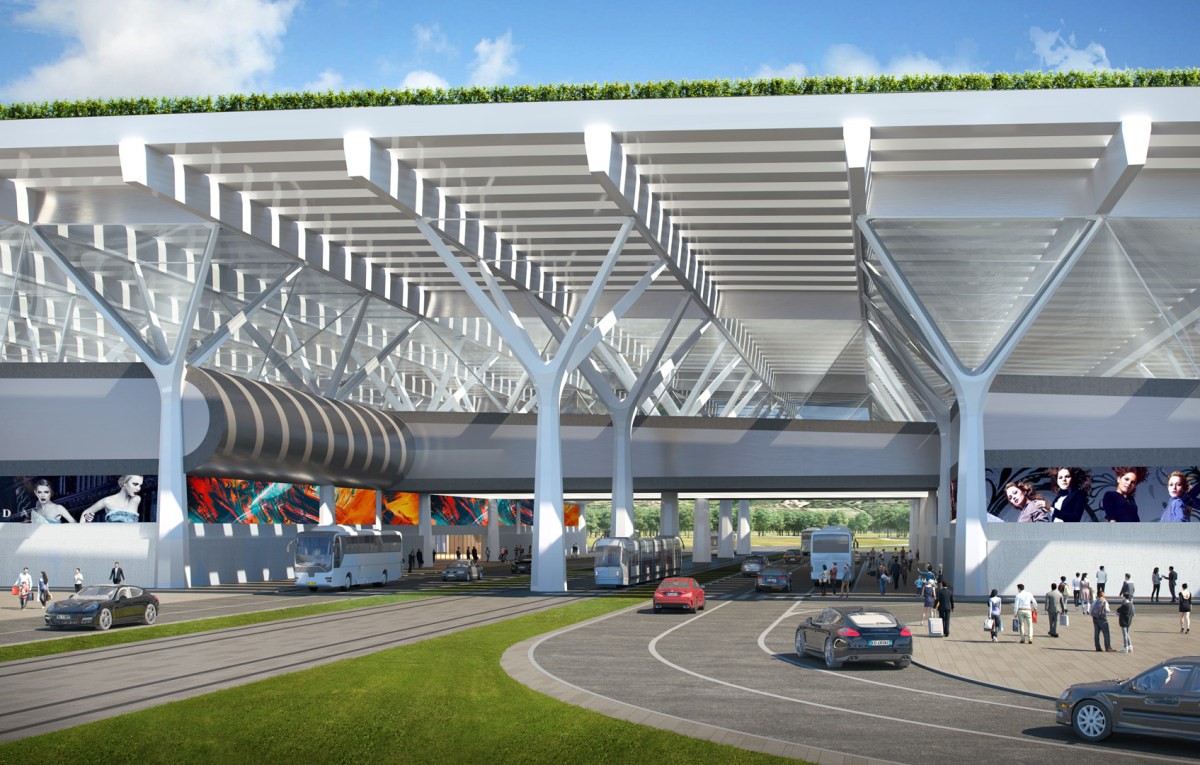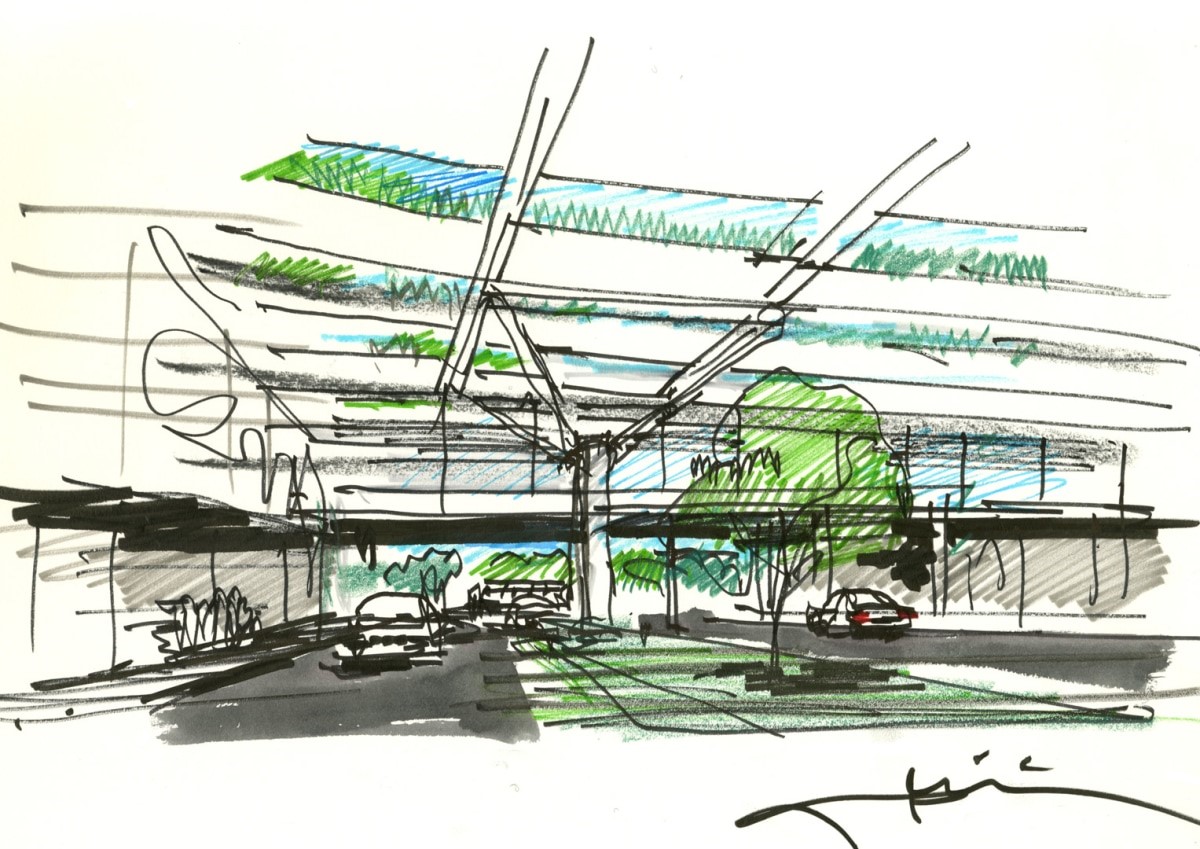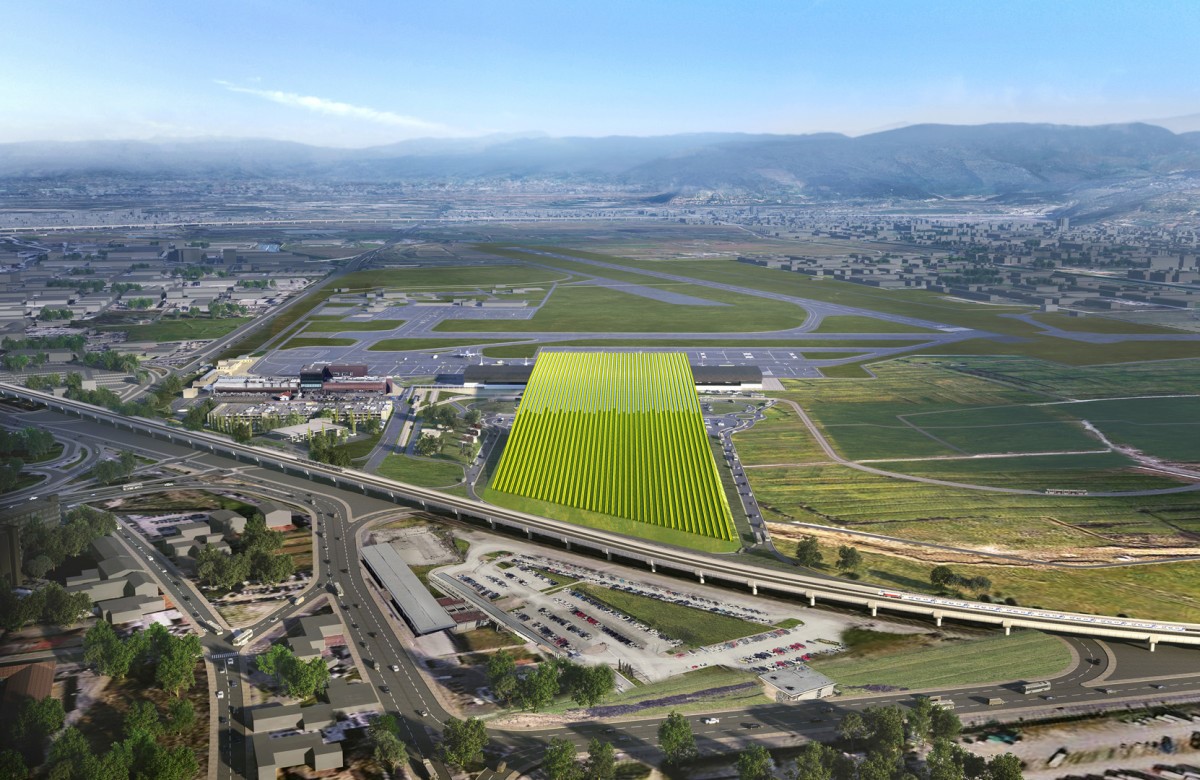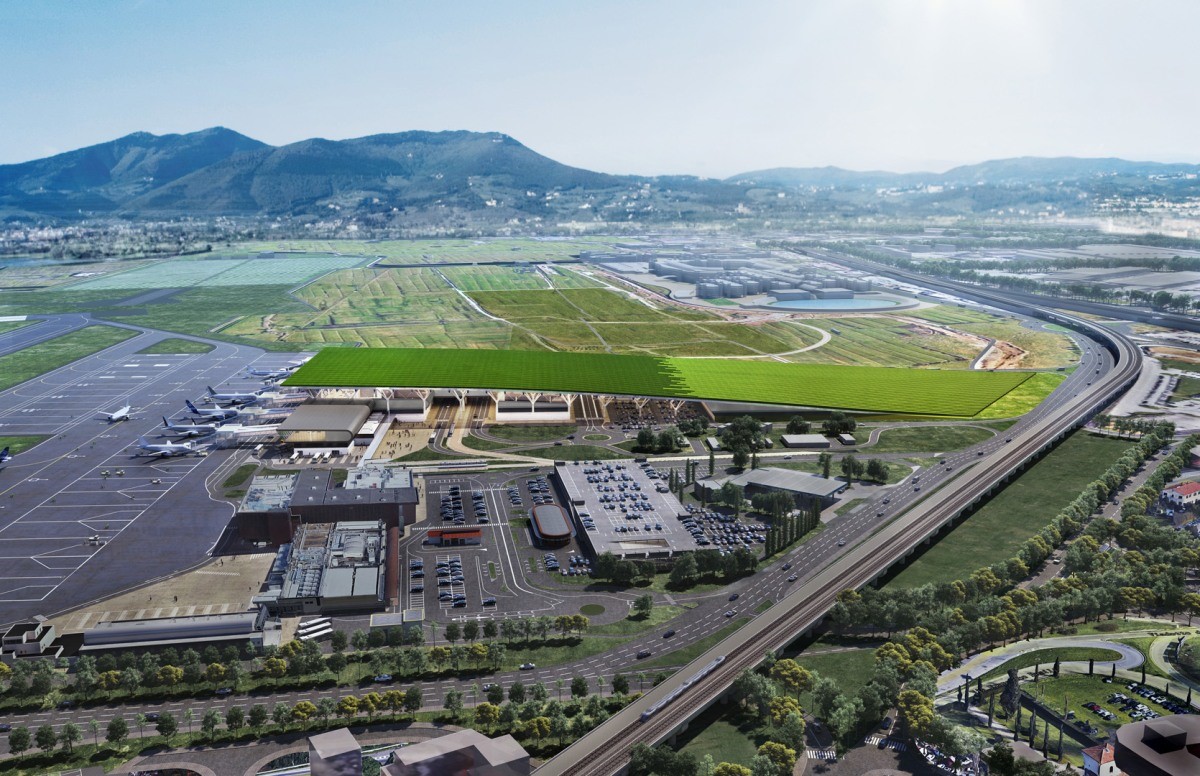From afar, the new international terminal at Italy’s Florence Airport will be almost indistinguishable from the area’s natural terrain. That’s because the entire structure is set to be covered with a functional 19-acre vineyard, complete with an expert local vinter who will oversee wine production on-site.
Located just a few miles northwest of Florence’s city center, construction on the new airport is expected to begin this year, with its first phase wrapping up in 2026. Tucked beneath the structure’s sloping green roof, a central Italian-style “piazza” will be its hub. Here, arrivals and departures face each other, minimizing confusion about how to navigate the space. Staggered between 38 rows of living vineyards on the roof, large skylights allow natural light into the piazza—as well as providing a view of the greenery capping the building.

The plan comes from New York-based firm Rafael Viñoly Architects. Rafael spearheaded design on projects including the Tokyo International Forum, the Cleveland Museum of Art, and the Carrasco Airport. He began work on Florence Airport’s international terminal in 2014, and spent nearly a decade deeply researching the site and conceptualizing the structure before his passing in March 2023. Now, his son and collaborator, Román Viñoly, is guiding the project.

“My father was intensely motivated by contributing something to the city that gave the world Brunelleschi and Michelangelo, among many others,” Román says. “This was something that made him really strive to produce a work that would become a landmark in the city.”
Alongside the design inspiration they found in Italian artists, Román and Rafael also drew from iconic train stations to help build their vision. Román cites New York City’s original Penn Station as an example of a building that became “synonymous with the city”—something he hopes to achieve with the Florence Airport by ensuring that it reflects the region’s storied history.

From initial brainstorms, the vineyard emerged as the ultimate symbol of the Tuscan region. And, considering how much of the landscape around Florence is already comprised of vineyards, the choice will also allow the airport to blend seamlessly into its surroundings. The working vineyard will be located on the eastern side of the roof’s slope, which is close to ground level and well outside of airplanes’ flight paths. For safety reasons—and to protect plants from pollutants—the western region of the roof that rises up over the terminal will consist of non-fruit-bearing plants. Eventually, wine will be made and stored in special chambers beneath the roof.
Insulation provided by the rooftop vineyards will contribute toward an effort to make the airport more sustainable through natural temperature control. In the winter months, the thick layer of soil will help keep warmth in, while the evaporative cooling from the planting beds will provide relief from the heat in the summer. The skylights will reduce the need for artificial lighting, and additional electricity will be sourced “as much as possible” from locally generated photovoltaics.

“Sustainability should be a major design consideration of anybody setting pencil to paper to design any building,” Román says. “That’s how we approach architectural design, from the perspective that it is a moral responsibility of the architect to consider every sustainable strategy in the execution of a design and then in the construction of a building.”
News of the Florence Airport redesign comes on the heels of several recent innovative airports. Singapore’s Changi Airport boasts a butterfly garden and rooftop swimming pool; India’s Kempegowda International Airport features a lush garden network; and Portland’s new airport, set to open this May, was constructed mainly with local timber. Perhaps like the quintessential train stations of old, designers are beginning to recognize airports’ potential to serve as something more than a pit stop.
“I think there’s a global trend toward the recognition that airports are destinations in and of themselves,” Román says. “I see the Florence Airport firmly inside that trend.”
(33)